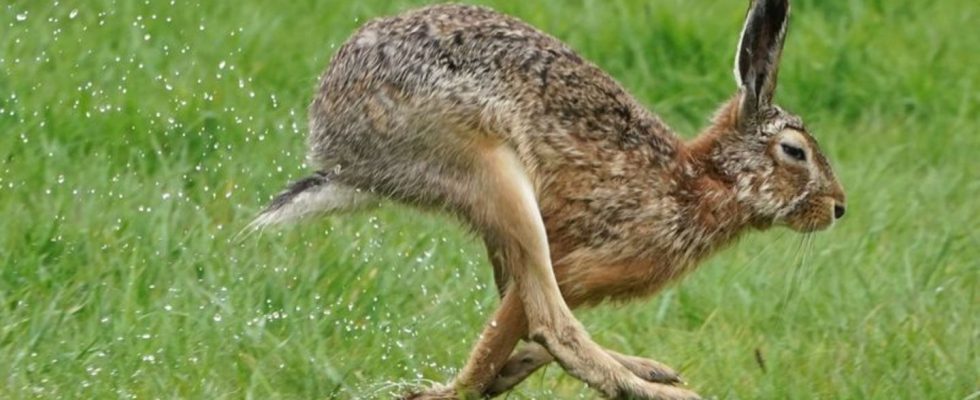Animals
Brown hare stock stable despite dry summer
A hare jumps across a meadow on the North Sea island of Pellworm. photo
© Marcus Brandt/dpa
There have recently been plenty of brown hares in Germany’s meadows and fields – even if the heat has caused some of their food to dry out. Hunters are mesmerized by the weather for the current long-eared offspring.
The number of endangered brown hares has recently stabilized in Germany. According to the German Hunting Association (DJV), 16 hares hopped on average per square kilometer in spring 2022 on fields, meadows and fields – as many as in 2021. “This is one of the highest counts in the past 20 years,” said DJV – Spokesman Torsten Reinwald of the German Press Agency.
The dry spring of 2022 helped keep the number at the level of 2021 – even if the following hot and dry summer of 2022 affected the long ears. Spring is the important time when hares are born.
Weather change desirable
How the current young animals will develop in the brown hares at Easter in March and April is still uncertain. Because they are sensitive to cold, wet weather, as was the case last March. Brown hares do not have a protective cave like rabbits do. After birth, the fur of the precocial is not so good, said Reinwald. “If it then sticks together, due to rain and moisture, the rabbits lose far too much body heat and ultimately freeze to death.” A change in the weather with less rain and fewer sub-zero temperatures is to be wished for the young hares, said Reinwald.
The past year got off to a promising start for the young brown hare with a dry and warm spring. However, it was precisely these weather conditions that later affected the animals: “The situation reversed, the summer was too hot and too dry. A lot of potential rabbit food simply dried up,” said Reinwald, referring to herbs and grasses that the hares eat.
Significant differences within Germany
For the count of brown hares as part of wildlife monitoring, hunters recorded how many animals could be spotted at night in the light of a standardized searchlight in 463 selected areas in spring and autumn last year. There are clear differences between the six large landscapes in Germany: With an average of 24 animals per square kilometer, the population is densest in the north-west German lowlands, i.e. from the Danish border to the northern Rhineland. In the south-west German low mountain ranges there are 17 hares. The long-eared hares are comparatively few to be found in the north-east German lowlands with 6 hares per square kilometer.
In a comparison of the first count in spring with the second count in autumn 2022, hunters nationwide counted an average of 13 percent more hares per area. According to the DJV, this growth rate, which also serves as an indicator of the health of the population, is above average and was three percentage points higher than in 2021. Significantly more growth was registered at 22 percent in the western German low mountain ranges. There, nature recovered from the 2021 floods, it said.
At least two million hares
The hunting association cites higher land use, more intensive agriculture and road traffic as reasons for the shrinking habitat for brown hares. Eating enemies such as foxes also give the hare a hard time. According to projections by the German Wildlife Foundation and the Hunting Association, there are at least two million hares in Germany. Although the number is currently stable, it is at a low level compared to the 1970s.
The foundation also sees the population of hares as an indicator of how other field dwellers such as partridges, hamsters and lapwings are doing. “Because if the rabbit is not doing well, other species are already on the verge of extinction,” said Andreas Kinser, head of nature and species protection at the foundation, according to a statement. The foundation and also the hunting association call for more habitats to be created for brown hares and for farmers to be rewarded for this.

